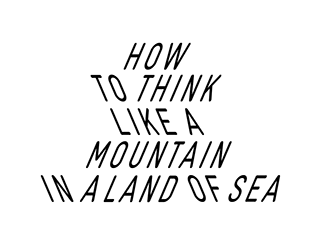
Ad van der Koog
(The Netherlands)

Dishoek Inventory VI: In search of silence
“It is a languid summer afternoon. You walk on a path over the dunes. Walking onthe ridge, your left ear towards the land, your right ear towards the sea. You sit down on a dark green bench. Your back facing the sea.”
Guided by the music piece Why Patterns of the American composer Morton Feldman, who visited Zeeland several times, this work contains images, sounds and thoughts, gathered on a dune stretch of 900 meters. Feldman’s late compositions are characterised by their extreme durations. The music is intimate and quiet, slowly evolving. Listening to these pieces means loosing any sense oftime.
Ad van der Koog studied musicology and photography. He currently completes a Masters degree in Critical Studies at Sandberg Instituut Amsterdam. The images he makes and the texts he writes focus on place and placelessness. How can a place be connected to a memory? www.ljuxx.com
Dishoek
It is a languid summer afternoon. You walk on a path over the dunes. Walking on the ridge, your left ear towards the land, your right ear towards the sea. You sit down on a dark green bench. Your back facing the sea. You take your phone and put in the earbuds. Why Patterns?
Flute. Piano. Glockenspiel. The long sustained notes of the flute. The soft chords of the piano. The tinkling sounds of the Glockenspiel. American composer Morton Feldman wrote this piece in 1978. The total length is about half an hour, not long for a Feldman piece. You are lulled to countless disjointed thoughts by the three weaving lines of the instruments. Weaving in thewaves.
Feldman was in Zeeland three times. You imagine that he must have liked the abstract, bare landscape. A landscape of silence and repetition. You close your eyes. Sometimes Feldman fell asleep during his music. You imagine how he would have listened to Zeeland. Did he connect the landscape with his music?
Tingting ... tingting ... tingting ... After nine minutes you startle. The limping high notes of the Glockenspiel tickle your ears. The sun burned the back of your hands. Feldman’s father was a manufacturer of children’s coats. Feldman himself used to work in the factory of his father. It was in the New York garment district. Later he would become interested in Middle-Eastern rugs. The weaving patterns were an inspiration for his music.
Once there was this talk with Feldman. It was an interview on Dutch radio. You can’t remember what he talked about. It must have been about his slowly evolving music. About the returning patterns. About the extremes in duration. It must have been about silence. What you can remember is the continuous sound of a lawn mower. Drowning the words by Feldman. You imagine the lawn mower, somewhere here in Zeeland. It must have been a hot summer, like it is now.
After fifteen minutes, halfway Why Patterns, you get up and continue your walk. (Was the interview actually recorded in Zeeland? Or was it in Los Angeles?)